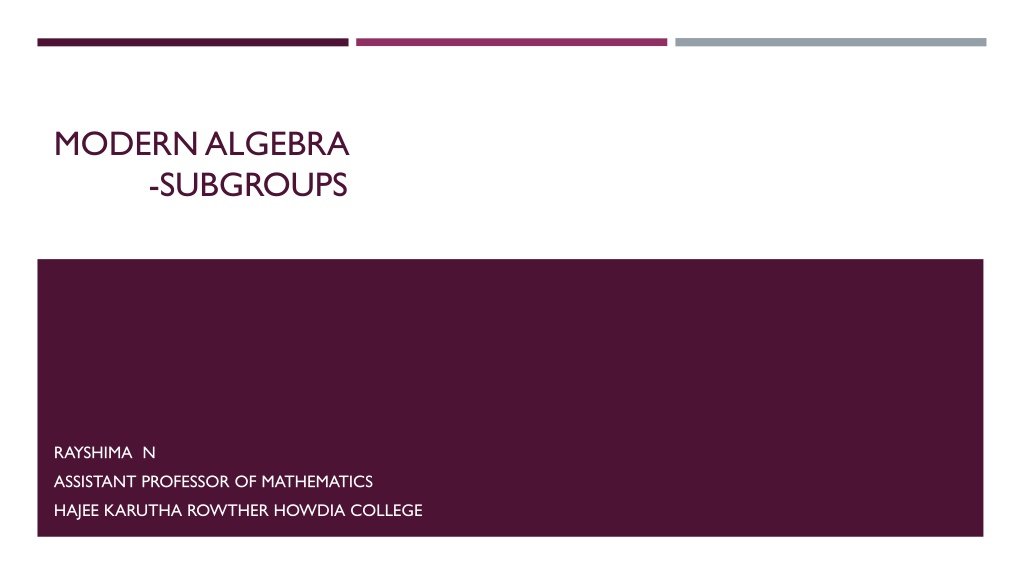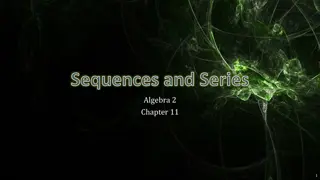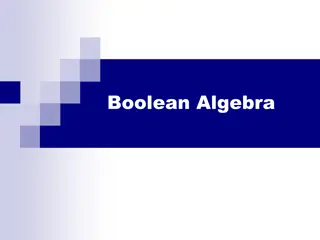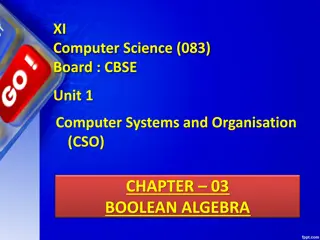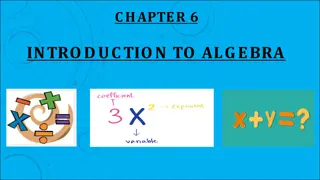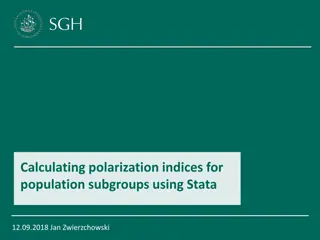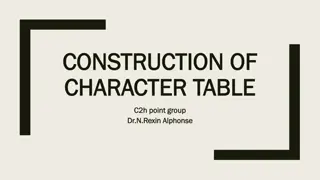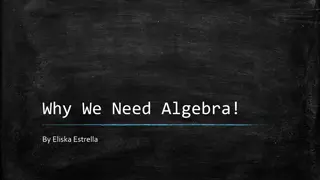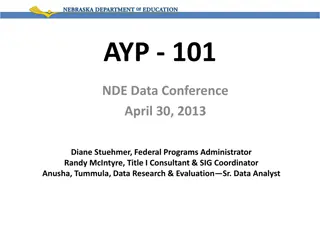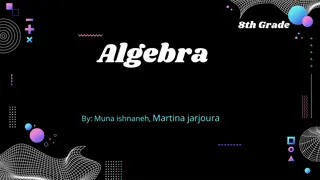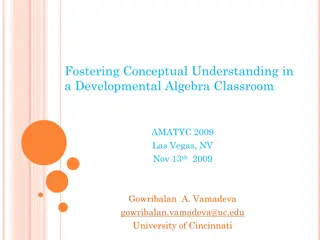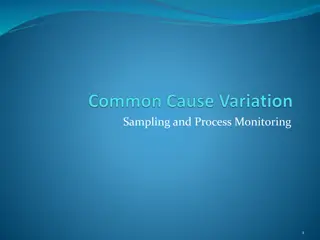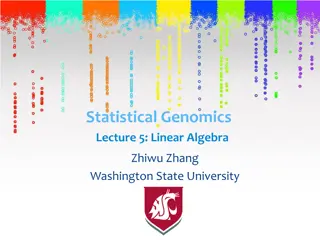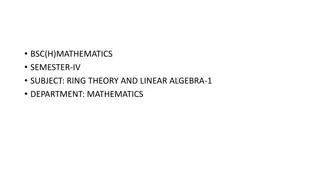Understanding Subgroups in Modern Algebra
Subgroups in modern algebra play a crucial role in group theory. A subset H of a group G is considered a subgroup if it forms a group with respect to the operation inherited from G. Trivial subgroups, improper subgroups, examples like (Q, +) being a subgroup of (R, +), and theorems like Theorem 1 and Theorem 2 are discussed in detail. The concept of subgroups helps in analyzing the structure and properties of groups in algebraic contexts.
Download Presentation

Please find below an Image/Link to download the presentation.
The content on the website is provided AS IS for your information and personal use only. It may not be sold, licensed, or shared on other websites without obtaining consent from the author. Download presentation by click this link. If you encounter any issues during the download, it is possible that the publisher has removed the file from their server.
E N D
Presentation Transcript
MODERN ALGEBRA -SUBGROUPS RAYSHIMA N ASSISTANT PROFESSOR OF MATHEMATICS HAJEE KARUTHA ROWTHER HOWDIA COLLEGE
SUBGROUPS Definition: Let G be a group. A subset H of G is called a subgroup of G, if H itself is a group under the operation inherited from G. For a subset H to be a subgroup G following should be satisfied: H is closed under the binary operation in G. That means, a, b H = ab H. 1. The identity e of G is in H. 2. For a H = a 1 H. 3. If H is a subgroup of G, we write H G. Further if, H G then we say H is a proper subgroup of G. The Trivial Subgroups: Let G be a group. Then, {e} and G are two of its trivial subgroups.
SUBGROUPS Definition: A subset H of group G is called subgroup of G if H forms a group with respect to the binary operation in G. Examples: (i) Let G be any group. Then {e} and G are trivial subgroups of G. They are called improper subgroups of G. (ii) (Q, +) is a subgroup of (R, +) and (R, +) is a subgroup of (C, +). (iii) In (Z8, ), let H1 = {0, 4} and H2 = {0, 2, 4, 6}. The Cayley tables for H1 and H2 are given by
SUBGROUPS It is easily seen that H1 and H2 are closed under and (H1, ) and (H2, ) are groups. Hence H1 and H2 are subgroups of Z8. (iv) {1, 1} is a subgroup of (R , ). (v) {1, i, 1, i} is a subgroup of (C , ). (vi) For any integer n we define nZ = {nx : x Z}. Then (nZ, +) is a subgroup of (Z, +). For, let a, b nZ. Then a = nx and b = ny where x, y Z. Hence a + b = n(x + y) nZ and so nZ is closed under +. Clearly 0 nZ is the identity element. Inverse of nx is nx = n( x) nZ. Hence (nZ, +) is a group.
SUBGROUPS Theorem 1: G. (b) for each a H the inverse of a in H is the same as the inverse of a in G. Let H be a subgroup of G. Then (a) the identity element of H is the same as that of Proof. (a) Let e and e be the identity of G and H respectively. Let a H. Now, e a = a(since e is the identity of H) = ea(since e is the identity of G and a G) e a = ea e = a(by cancellation law) (b) Let a and a be the inverse of a in G and H respectively. Since by (a), G and H have the same identity element e, we have a a = e = a a. Hence by cancellation law, a = a
SUBGROUPS Theorem 2: A subset H of a group G is a subgroup of G if and only if (i) it is closed under the binary operation in G. (ii) The identity e of G is in H. (iii) a H a 1 H. Proof. Let H be subgroup of G. The result follows immediately from Theorem 1. Conversely, let H be a subset of G satisfying conditions (i), (ii) and (iii). Then, obviously H itself a group with respect to the binary operation in G. Therefore H is a subgroup of G.
SUBGROUPS Theorem 3: A non-empty subset H of a group G is a subgroup of G if and only if a, b H ab 1 H. Proof. Let H be a subgroup of G. Then a, b H a, b 1 H ab 1 H. Conversely, suppose H is a non-empty subset of G such that a, b H ab 1 H. Since H 6= , there exists a H. Hence a, a 1 H. Therefore, e = aa 1 H, i.e., H contains the identity element e. Also, since a, b H. ea 1 H. Hence a 1 H. Now, let a, b H. Then a, b 1 H. Hence a(b 1 ) 1 = ab H and so H is closed under the binary operation in G. Hence by Theorem 4, H is a subgroup of G. If the operation is + then H is a subgroup of G if and only if a, b H a b H
SUBGROUPS Theorem 4: Let H be a non-empty finite subset of G. If H is closed under the operation in G then H is a subgroup of G. Proof. Let a H. Then a, a2 , . . . , an , . . . are all elements of H. But since H is finite the elements a, a2 , a3 . . . , cannot all be distinct. Hence let a r = a s , r < s. Then a s r = e H. Now, let a H. We have proved that a n = e for some n. Hence aan 1 = e. Hence a 1 = a n 1 H. Thus H is a subgroup of G.
SUBGROUPS Theorem 5: If H and K are subgroups of a group G then H K is also a subgroup of G. Proof. Clearly e H K and so H K is non-empty. Now let a, b H K. Then a, b H and a, b K. Since H and K are subgroups of G, ab 1 H and ab 1 K. Therefore ab 1 H K. Hence by Theorem 4, H K is a subgroup of G.
SUBGROUPS Theorem 6: The union of two subgroups of a group G is a subgroup if and only if one is contained in the other. Proof. Let H and K be two subgroups of G such that one is contained in the other. Then either H K or K H. Therefore H K = K or H K = H. Hence H K is a subgroup of G. Conversely, suppose H is not contained in K and K is not contained in H. Then there exist elements a, b such that a H, a / K, b K, and b / H. Clearly a, b H K. Since H K is a subgroup of G ab H K. Hence ab H or ab K. If ab H, then a 1 H since a H. Hence a 1 (ab) = b H, a contradiction. If ab K, b 1 K since b K. Hence (ab)b 1 = a K, a contradiction. Hence our assumption that H is not contained in K and K is not contained in H is false. Therefore H K or K H
